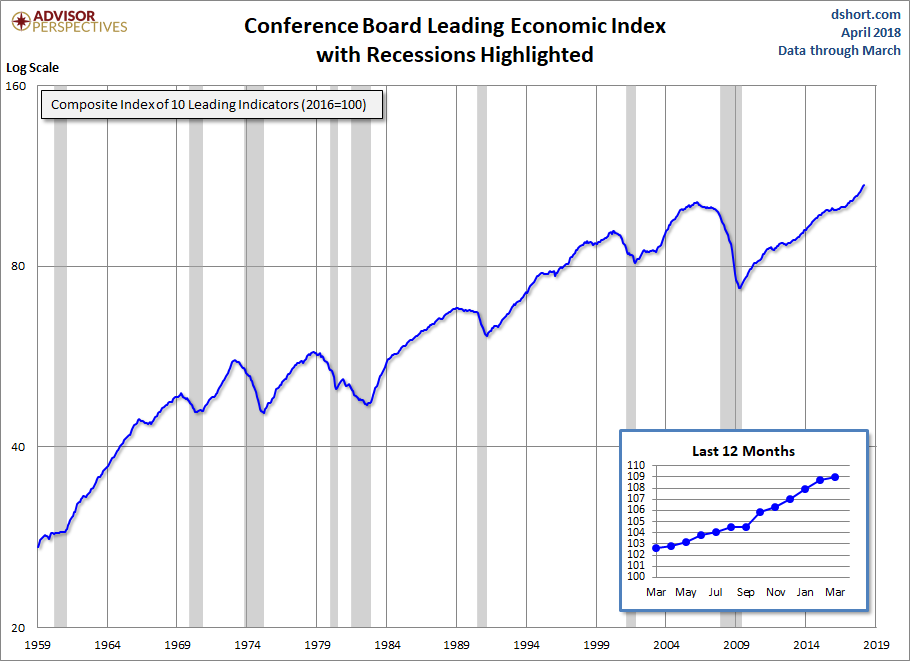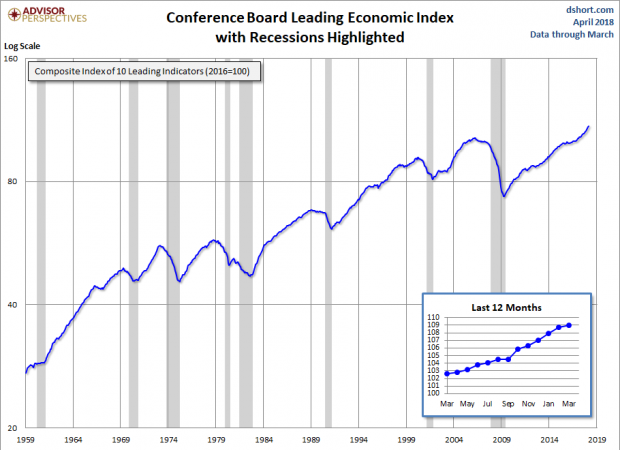The latest Conference Board Leading Economic Index (LEI) for March increased to 109.0 from 108.7 in February. The Coincident Economic Index (CEI) came in at 103.4, up from the previous month.
The Conference Board LEI for the U.S. increased again in March. Positive contributions from the yield spread, the ISM® new orders index and expectations for business conditions more than offset the negative contributions from the average workweek and initial claims for unemployment insurance (inverted). In the six-month period ending March 2018, the leading economic index increased 4.3 percent (about an 8.8 percent annual rate), much faster than its growth of 1.9 percent (about a 3.7 percent annual rate) over the previous six months. In addition, the strengths among the leading indicators have remained very widespread.
The Conference Board CEI for the U.S., a measure of current economic activity, increased in March. The coincident economic index increased 1.4 percent (about a 2.8 percent annual rate) between September 2017 and March 2018, faster than its growth of0.8 percent (about a 1.6 percent annual rate) over the previous six months. The strengths among the coincident indicators have remained very widespread, with all components advancing over the past six months. The lagging economic index continued to increase at about the same pace as the CEI, so the coincident-to-lagging ratio remained unchanged. Real GDP expanded at a 2.9 percent annual rate in the fourth quarter of 2017, after increasing 3.2 percent (annual rate) in the third quarter. [Full notes in PDF]
Here is a log-scale chart of the LEI series with documented recessions as identified by the NBER. The use of a log scale gives us a better sense of the relative sizes of peaks and troughs than a more conventional linear scale.

For additional perspective on this indicator, see the latest press release, which includes this overview:
“The U.S. LEI increased in March, and while the monthly gain is slower than in previous months, its six-month growth rate increased further and points to continued solid growth in the U.S. economy for the rest of the year,” said Ataman Ozyildirim, Director of Business Cycles and Growth Research at The Conference Board. “The strengths among the components of the leading index have been very widespread over the last six months. However, labor market components made negative contributions in March and bear watching in the near future.”















No Comments